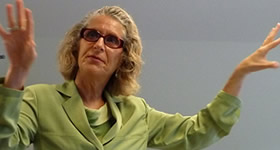Storytelling is a core element of fundraising. And storytelling is more than that…storytelling is a core element of being human, living one’s life.
Read Seth Godin‘s blog, May 20, 2012, “A true story.” As Seth reminds us, there’s no such thing as a really true story. The storyteller must engage the audience. The storyteller must make the story “relevant and interesting” to the audience, “hooking the audience into [the storyteller’s] worldviews and generating emotions and memories.” And then the story isn’t true like facts are true. And that very true story doesn’t work across cultures and boundaries.
But the really true story for the heart, that’s emotional and visceral. That kind of story works just about anywhere for just about anyone. And the audience hears and feels and believes.
“Everything is a tale. What we believe, what we know. What we remember, even what we dream. Everything is a story, a narrative, a sequence of events with characters communicating emotional content. We only accept as true what can be narrated.” [Carlos Ruiz Zafón, The Angel’s Game]
Now take a look at Jeff Brooks’ blog, “The two ingredients of stories that motivate giving,” posted November 28, 2012. Jeff refers us to a wonderful video that explains two key elements of the most impactful stories: Distress and Empathy. And the video explains the dramatic arc of a story, the universal story structure.
Seth Godin talks about “four questions worth answering” on his blog of November 26, 2012. “Who is your next customer,” asks Seth. Describe his or her “tribe…hopes and dreams…needs and wants.” Think about the story s/he tells himself.
So now I’m thinking about storytelling as this sequence:
— Telling your own story
— Listening to your own story
— Hearing your own story (Because truly listening well is the only way you’ll hear your own story – or the stories of others.)
— Understanding your own story (Sometimes we tell our own stories over and over before we actually hear and understand those stories and what they mean to us.)
— Learning from your own story (I can listen to my own story, hear it well, and finally understand it. But then what? Do I learn from my own story? Do I learn from the stories of others? And then what do I do?)
— Changing because of my own story and your stories and their stories
What do you think? How important is storytelling? What about the sequence of telling, listening, hearing, understanding, learning from, and changing because of? How does all this work within your organization? What kind of stories does your organization tell that reflects its values and culture, founding and future? What stories do your donors tell? How well do you embrace this all?

